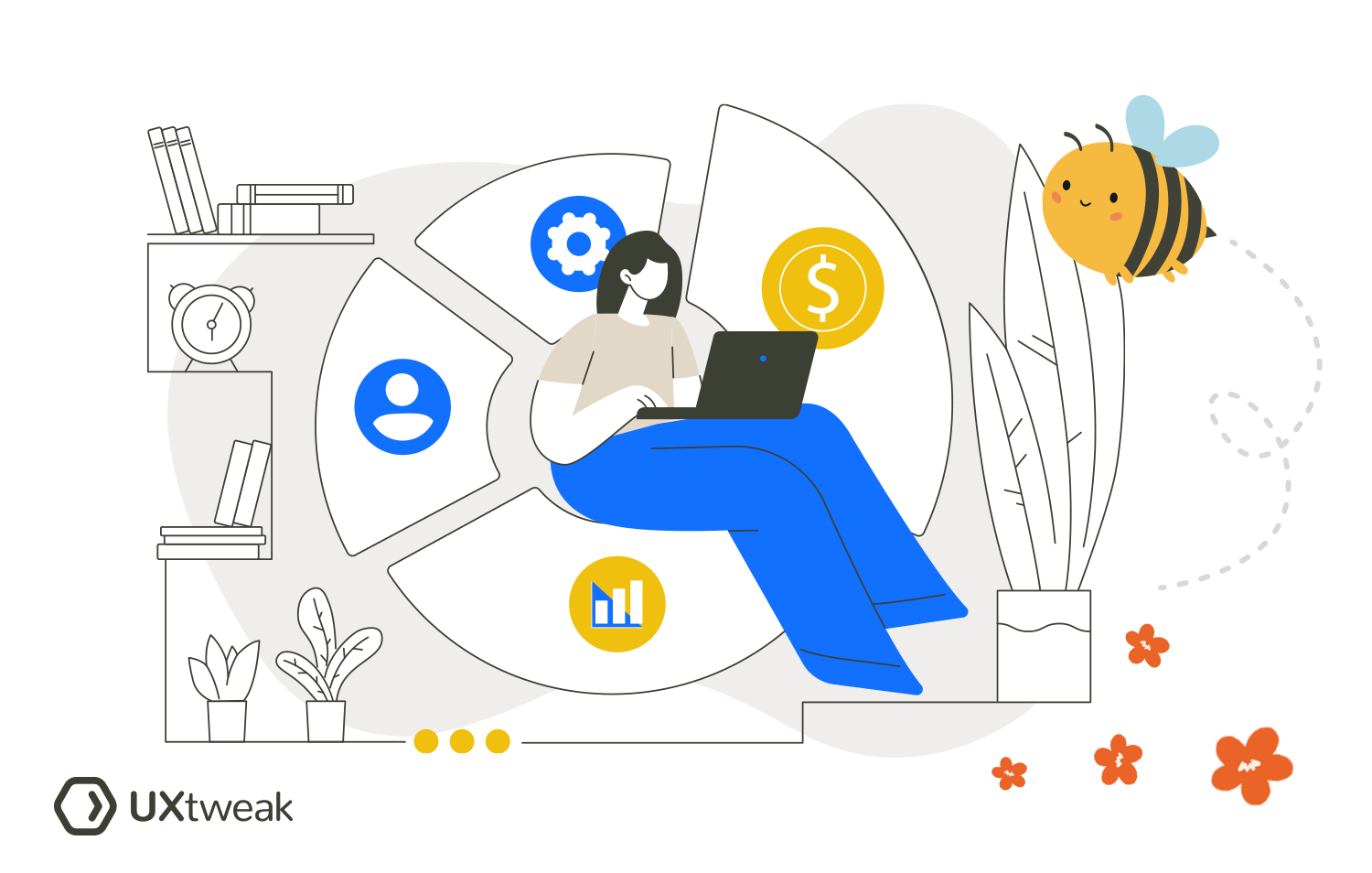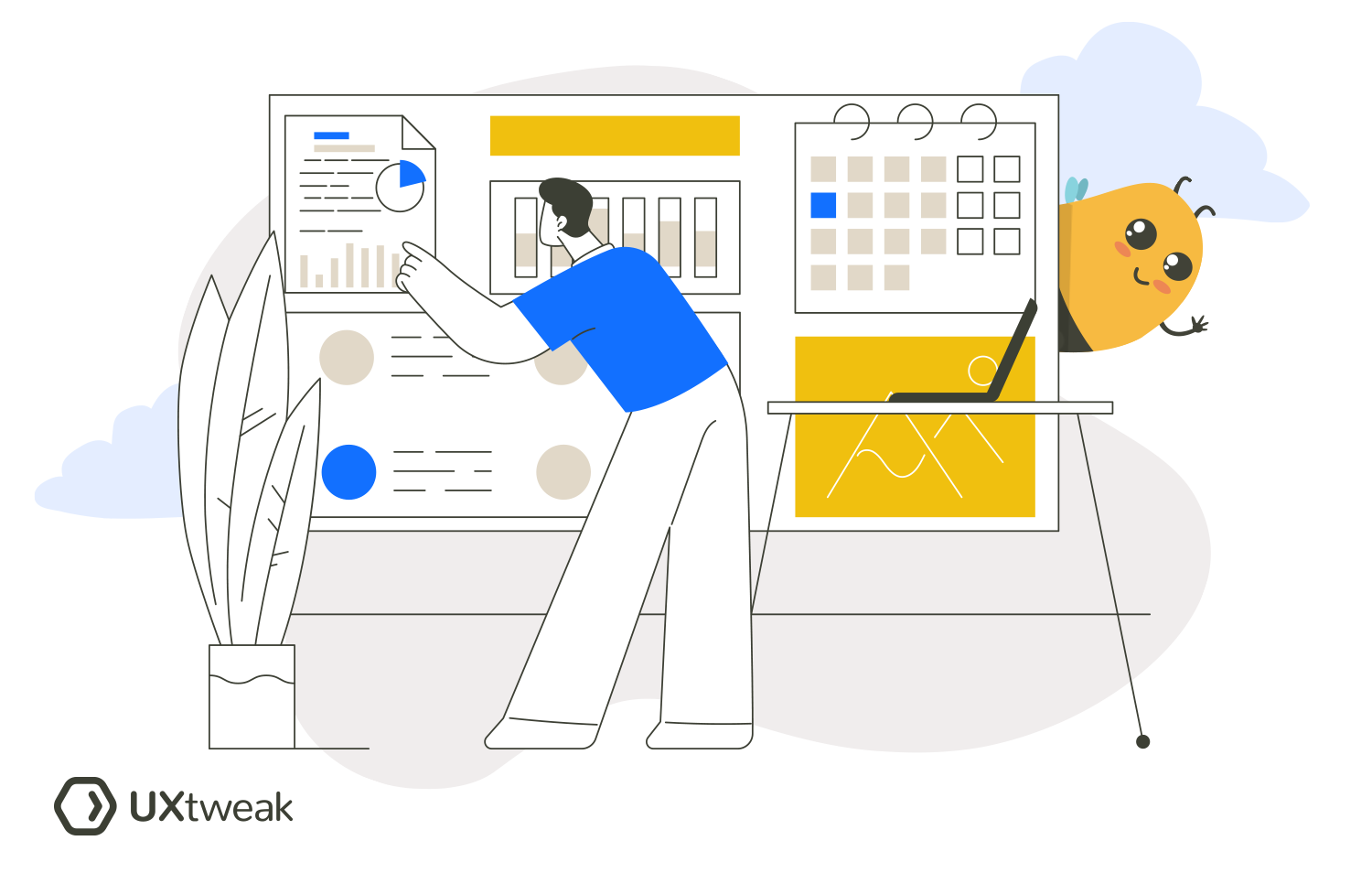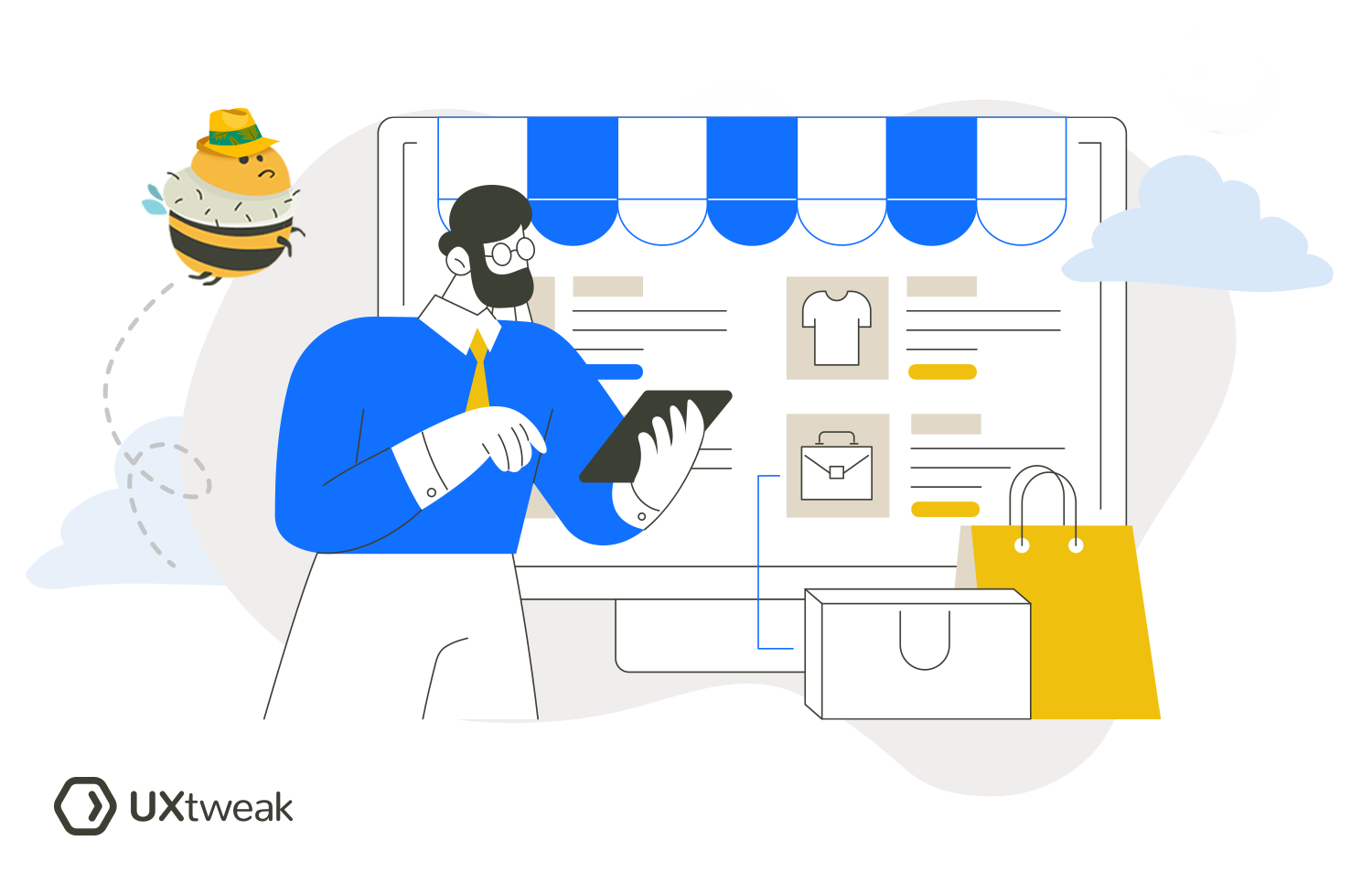According to a recent study, user interviews is one of the most frequently used methodologies in user research. And there’s no surprise! What can be more insightful than talking to your users directly, engaging in a meaningful conversation, and asking them questions face to face? There’s a bunch of different types of user interviews that you can choose to conduct, depending on their formality, structure, format and frequency.
Let’s take a closer look at each of them and understand when to use which:
- Structured VS Semi-structured VS Unstructured user interviews
- Generative VS Contextual VS Continuous user interviews
- In-person vs. Remote user interviews
- Group VS One-on-one user interviews
Structured VS Semi-structured VS Unstructured user interviews

Structured user interviews
Structured interviews are highly organized and strictly follow the pre-defined script. Each participant is asked the same series of questions in the same order. This is a quantitative approach and it allows for easy comparison and statistical analysis.
In structured interviews, there’s not much room for deviation from the script. This lack of flexibility helps to prevent interviewer bias and ensures uniformity in responses. This type of interview can be conducted in person, over the phone, or even through electronic means such as online surveys.
💡 For structured interviews, questions are prepared in advance. Do you know what questions to ask and how to do that correctly?
Semi-structured user interviews
A blend of structured and unstructured types of user interviews, the semi-structured approach is the ultimate middle ground between these two. They utilize a guide of key questions but still allow for additional questions to be asked in response to participants’ answers.
This is a qualitative research method, and it allows to maintain a more natural flow of the conversation, digging deeper into participants’ answers. The questions are designed to elicit detailed responses and encourage participants to speak freely about their experiences, perceptions, and opinions.
Unstructured user interviews
Unstructured interviews are informal and conversational and involve no predetermined questions or script. The interviewer allows the conversation to flow naturally based on the interviewee’s responses and interests.
Most often, the interviewer will have some topics in mind, but they still aim for the conversation to progress naturally based on the participant’s thoughts and feelings. The approach is adapted dynamically, exploring patterns, ideas and other interesting areas that emerge during the conversation.
Those often lead to unexpected insights, that would not be uncovered otherwise. This method is particularly suited for delving deeply into personal stories and experiences, providing rich qualitative data.
Generative VS Contextual VS Continuous user interviews

Generative user interviews
Generative interviews use an exploratory approach, aiming to uncover new insights, user needs, and potential solutions. This is the most classical methodology, and it typically involves open-ended questions that encourage participants to express themselves freely.
Researchers focus on understanding the underlying motivations and challenges users face, using collected insights to brainstorm new product ideas.
Contextual user interviews
Contextual interviews are based on observing users in their natural environment, such as their home, workplace, or other relevant settings. These interviews are semi-structured, with participants completing tasks while the researcher observes and asks questions to understand their behaviors better.
Contextual interviews provide rich insights into how users interact with products or services in real-world contexts, uncovering usability issues and validating design decisions.
Continuous user interviews
Continuous interviews involve regularly scheduled sessions with users during an extended period of time, often on a weekly or bi-weekly basis. These interviews can be generative or contextual, but their main focus is the same – exploring new insights or tracking changes in user attitudes and behaviors over time.
Continuous interviews are great for gathering ongoing feedback throughout the product development lifecycle. They allow for iterative improvements and help to ensure that solutions you design remain aligned with evolving user needs.
Below, we’ll also explore 4 different types of user interviews based on their format:
- In-person vs. remote
- Group vs. one-one-one
In-person vs. Remote user interviews

In-person user interviews
In-person interviews are face-to-face meetings where a researcher interacts directly with a participant. They have a bunch of advantages compared to the remote ones, but can also be tricky due to several factors.
The interviewer and participant meet in a specific location, which can be a controlled environment like a research facility, participant’s home, workplace, or any other relevant setting.
Advantages of in-person interviews:
- Direct interaction gives the interviewer a chance to observe the body language, facial expressions, and other non-verbal cues of the participant, providing additional information for the study.
- Being in the participant’s natural or chosen environment can offer insights into how context influences their interactions with your products.
- In-person interactions help to build deeper connections and foster trust, encouraging participants to share their thoughts openly.
Disadvantages of in-person interviews:
- In-person interviews require careful planning regarding locations, travel arrangements, and scheduling. These factors make it much more expensive, and less flexible than remote alternatives.
- While some participants may feel more comfortable and engaged in a face-to-face setting, others might feel intimidated or less open due to the physical presence of the interviewer. This can introduce bias and influence their responses.
- The geographical reach of in-person interviews is quite limited, as you probably won’t be able to recruit a participant from Australia for an interview in the US, unless you have substantial resources available.
Remote user interviews
Remote interviews are a method of conducting interviews where the interviewer and participant communicate using digital tools such as video or phone calls. This approach has gained it’s popularity after the Covid-19 strike, when traveling to another place for an interview wasn’t possible due to the health restrictions.
Nowadays, these interviews are mostly conducted with the help of online user research tools, some of which also handle scheduling, recruiting, and help with insights analysis.
Advantages of remote user interviews:
- Remote interviews remove geographical barriers, making it possible to talk with participants from any place in the world, without having to spend a fortune.
- In situations where health risks (like during a pandemic) or safety concerns are present, remote interviews provide a safe alternative to face-to-face interactions.
- Remote interviews are easier to schedule since participants can join from their preferred locations without commuting.
- Remote interviews are cheaper, compared to the in-person ones
Disadvantages of remote user interviews:
- Remote interviews make you highly dependent on technology. Sometimes the quality of the interview can be lower due to connection drops, or the functionality of the communication platform of choice.
- In remote settings, it’s much harder to observe body language
Group VS One-on-one user interviews

Group user interviews
Group interviews involve gathering multiple participants together in a single session, usually led by a moderator. This format encourages diverse perspectives and stimulates discussions among participants, often leading to exchange of ideas and new user insights.
Advantages of group interviews:
- A group explores diverse viewpoints in the conversation, which will give you a deeper insight into the needs and preferences of different types of users.
- Conducting one session with multiple participants is often more cost-effective than arranging individual interviews.
Disadvantages of group interviews:
- Certain participants may dominate the conversation, overshadowing quieter individuals and skewing the data.
- You risk introducing bias, because the participants may feel pressure to conform to group norms or provide socially acceptable responses.
- Scheduling group interviews is often challenging, due to the need to accommodate the availability of multiple people.
One-on-one user interviews
One-on-one interview involves only one participant and one interviewer having a conversation, fostering a more intimate and focused interaction.
Advantages of one-on-one user interviews:
- In a one-on-one setting, it’s often easier for participants to express themselves freely
- One-on-one interviews are easier to schedule
- One-on-one interviews allow you to focus on specific responses of the participant, ask follow-up questions and gain deeper insights, which can be challenging with a group of people
Disadvantages of one-on-one user interviews:
- Without the voices of other participants, researchers may miss out on alternative viewpoints and collective brainstorming
Ready to conduct user interviews?
Hope this little breakdown was helpful and now you have a better idea of different types of user interviews and which one to choose for your next research study. If you feel like you still need to learn more about user interviews, keep reading and follow us to the next page of this guide.
However, if you feel like you are ready to conduct your interviews, let’s get started. Register for your UXtweak account and schedule your first interview with the help of our Live Interviews tool!


